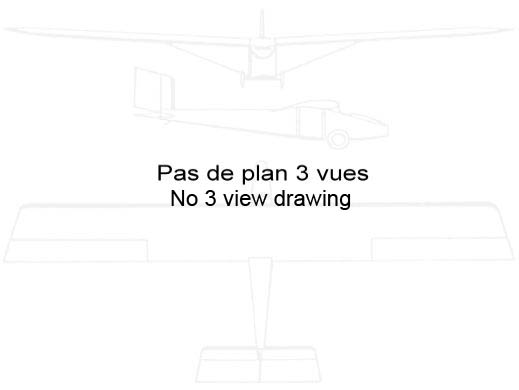
Orlik 2 Olympic
| DONNÉES GÉNÉRALES |
| Année du premier vol (ou de design, si seul projet) |
1938 |
| Pays | Pologne |
| Designer(s) | KOCJAN, Antoni |
| Premier constructeur | Warsztaty |
| Type d'appareil | Planeur |
| Fonction | Performance |
| SPÉCIFICATIONS TECHNIQUES |
| Envergure | -- |
| Longueur | -- |
| Hauteur | -- |
| Allongement | -- |
| Surface alaire | -- |
| Profil aile | -- |
| Masse à vide | -- |
| Masse maxi | -- |
| Charge alaire | -- |
| Vitesse mini | -- |
| Vitesse maxi | -- |
| Finesse maxi | |
| Taux de chute mini | -- |
| Nb sièges | 1 |
| Structure | -- |
AUTRES INFORMATIONS
| Constructeur(s) |
| ||||||
| Infos techniques | -- | ||||||
| Histoire résumée | The Orlik 2, which first flew in 1938, was a development of the 1937 14.4 m. Orlik 1. A special model (Orlik 3) was developed for the Olympic design competition for the 1940 games (won by the German D.F.S. Meise). It has unusual airbrakes on the wing undersurface, close to the leading edge, from the root to the wing bend. One example came to the U.S., and in WWII was imposed into the military as the XTG-7. Later, flown by Paul MacCready, it briefly held the world altitude record in 1948 at over 9,000 m. in the Sierra wave as well as winning the 1948 and 1949 U.S. Nationals. | ||||||
| Liens personnalités | KOCJAN, Antoni (Pologne) |
SOURCES DOCUMENTAIRES
| Liens WEB | Pas de site référencé. |
| Livres | Sailplanes 1920-1945 par SIMONS, Martin (2001) [p. 213. ]. Szybowiec Wyczynowy Orlik Olimpijski par MURAWSKI, Tomasz (2015) []. |

Team J2mcL © 2003 -
- Pages optimisées pour Mozilla Firefox

